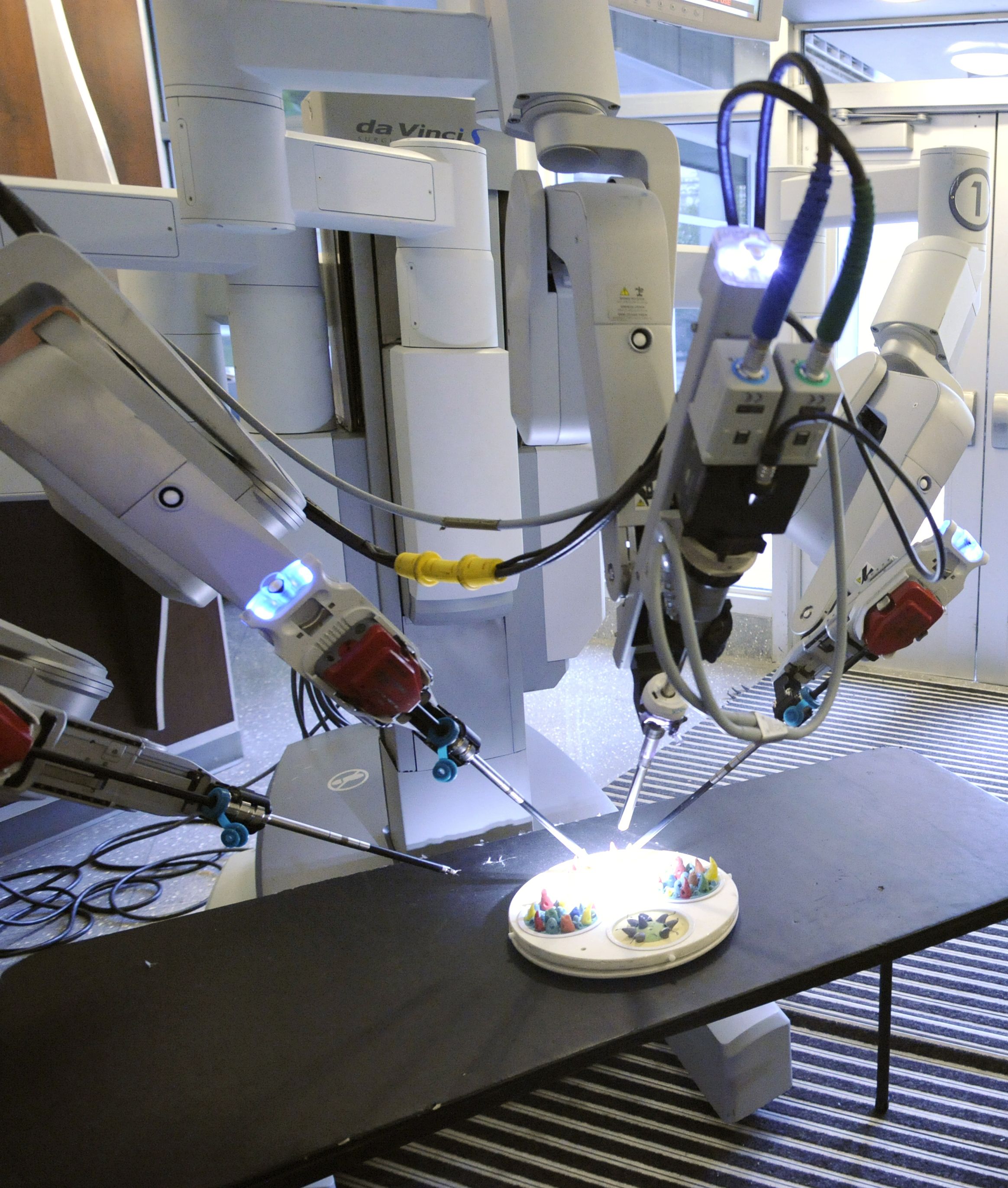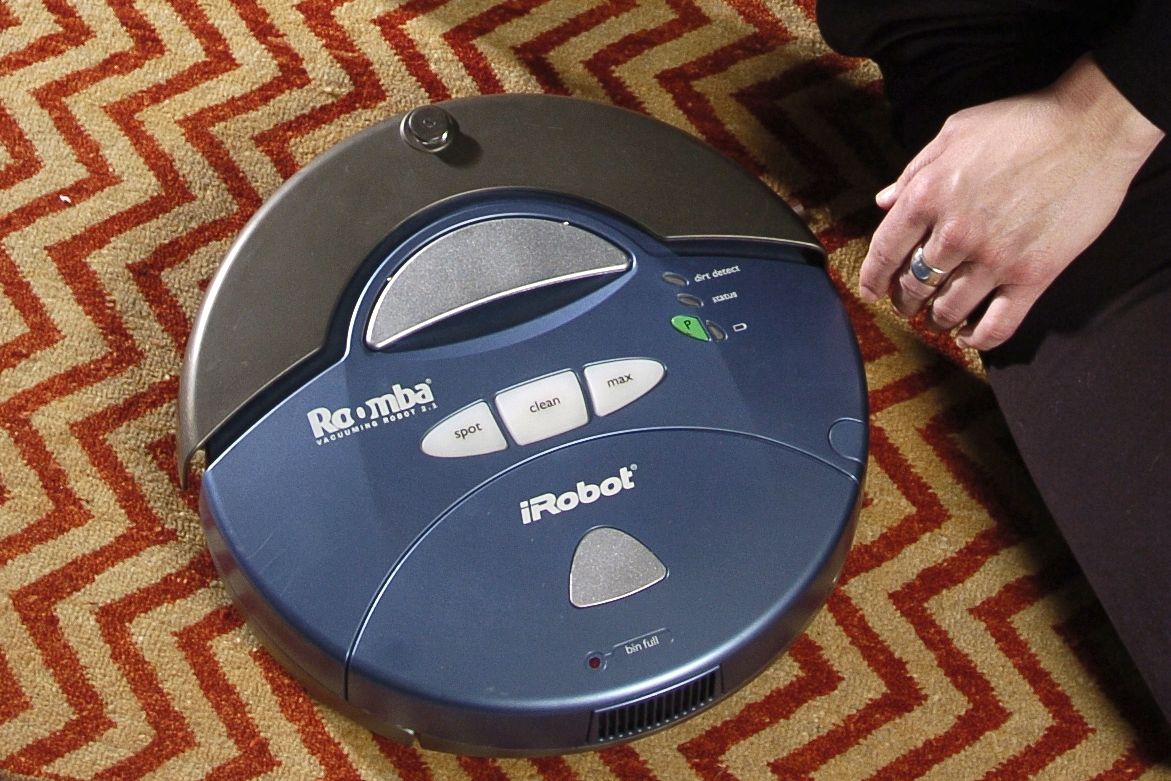Carnegie Science Center and Carnegie Mellon University announce five new inductees to Robot Hal of Fame®. Hall of Fame to Have Permanent Home at Carnegie Science Center in 2009
Byron SpiceTuesday, April 21, 2009Print this page.

PITTSBURGH, April 21, 2009 — Carnegie Science Center and Carnegie Mellon University announced today the 2010 class of inductees into the Robot Hall of Fame® at a press preview of roboworldâ„¢, the Science Center's new robotics exhibition opening June 13 and the permanent home for the Hall of Fame.
The five members of the class of 2010 are:
- NASA Mars Rovers Spirit and Opportunity
- iRobot Roomba
- DaVinci Medical Robot System
- Huey, Dewey, and Louie, from the 1971 film "Silent Running"
- T-800 Terminator, from the 1984 film "The Terminator"
The Robot Hall of Fame®, created in 2003 by the Carnegie Mellon School of Computer Science, recognizes excellence in robotics technology worldwide and honors the fictional and real robots that have inspired and embodied breakthrough accomplishments in robotics. Robots are selected for recognition and induction by a jury of scholars, researchers, writers, designers and entrepreneurs.
The five robots announced today will be officially added to the Robot Hall of Fame® at an induction ceremony at the Science Center in 2010.
"As with our last group of inductees, real robots again outnumber the fictional ones," said Matt Mason, director of Carnegie Mellon's Robotics Institute. "We in the robotics field believe this is the beginning of a trend, as robots such as Spirit and Opportunity, Roomba, and DaVinci are approaching or even exceeding performance levels that once were only imagined."
T-800 Terminator, the cyborg assassin portrayed by Arnold Schwarzenegger in 1984's "The Terminator," has capabilities still well beyond anything today's roboticists could cook up. Designed by the military computer Skynet, it can withstand repeated shotgun blasts, crash through walls, and keep running for 120 years on its power cells. But the T-800 also is notable for its intelligence; it can speak naturally (or at least as naturally as Schwarzenegger), read human handwriting, and use its machine learning software to grow more knowledgeable with every contact made with humans. The signature line, "Hasta la vista, baby," came from T-800's ability to learn and mimic human behavior.
"The Terminator represents humankind's greatest fear of robots: that they may one day turn on us, their creators, and seek to exterminate the human race," said Don Marinelli, executive producer of Carnegie Mellon's Entertainment Technology Center. "Terminator is a low-budget science fiction movie that continues to resonate with reviewers and critics alike. So much so that in 2008, The Terminator was deemed 'culturally, historically, or aesthetically significant' by the Library of Congress and selected for preservation in the United States National Film Registry."
Huey, Dewey, and Louie are the names given to three service drones by Freeman Lowell, the lone surviving crewman of the space freighter Valley Forge in the 1971 movie "Silent Running." The "legged robots are far closer in capability to today's mobile robots than to T-800, helping Lowell maintain trees and plants that have become extinct on Earth. Carnegie Mellon, for instance, now has two federally sponsored programs for exploring the use of robots in apple orchards and orange groves. In the film, Lowell, played by Bruce Dern, eventually tries to make the three drones more like humans, teaching them to play poker, plant trees, and even perform surgery on his injured leg.
Spirit and Opportunity have outperformed the expectations of NASA engineers. The pair of wheeled rovers landed on Mars five years ago for what was to be 90 days of exploration that might cover two-thirds of a mile. Today both are still at work with more than five miles on Spirit's odometer and close to 10 on Opportunity's. Spirit is ailing, with one of its six wheels busted and operating on just 30 percent of normal power because of dust on its solar panels. Spirit continues running, however, as it explores a plateau called Home Plate in the valley known as the Inner Basin. Opportunity is crater hopping on the other side of the Red Planet, driving between several craters only a yard or two in diameter as it makes its way to a large crater called Endeavour.
Roomba, a product of iRobot Corp., isn't nearly as exotic as Spirit and Opportunity. Martian dust doesn't cling to Roomba; rather, the robotic vacuum spends its time sucking dust and other grime off of carpets, floors, and rugs. With more than 2.5 million of the disk-shaped robots sold worldwide since 2002, it is one of the most successful consumer robots to date. Users are known to name their Roombas and have even established Roomba websites and Yahoo! discussion groups.
DaVinci, built by Intuitive Surgical Inc., operates on a totally different scale than the other robots in this class of inductees. Rather than ranging far and wide, this robotic system helps surgeons do intricate surgery on a very small scale. DaVinci is used during minimally invasive surgery, sometimes called keyhole surgery. The robot itself is unable to make decisions on its own or to make automatic incisions. But the robot translates the movements of the surgeon's hands into precise micro-movements, manipulating tiny surgical instruments that are inserted into the patient through one-centimeter-diameter incisions. More than 200 are in use worldwide for procedures such as repair of the heart's mitral valve, removal of the prostate gland, and weight-loss surgery.
About Carnegie Science Center
Carnegie Science Center brings the world of science alive for visitors of all ages. One of the four Carnegie Museums of Pittsburgh, the Science Center features more than 400 hands-on exhibits, three live demonstration theaters, a four-story IMAX® Dome theater, an interactive full-dome digital planetarium, a science-of sport exhibition, a Cold War submarine moored on Pittsburgh's Ohio River, and a world-renowned model railroad display. Carnegie Science Center is located at One Allegheny Avenue on Pittsburgh's North Shore next to Heinz Field. Visit www.CarnegieScienceCenter.org or call 412.237.3400 for more information.
About Robot Hall of Fame
The Robot Hall of Fame® was created in 2003 by Carnegie Mellon University's School of Computer Science to recognize and honor the real and fictional robots that have inspired imaginations and achieved technical excellence. For more, see www.robothalloffame.org.
About Carnegie Museums of Pittsburgh
Founded by Andrew Carnegie in 1895, Carnegie Museums of Pittsburgh is a collection of four distinctive museums dedicated to exploration through art and science: Carnegie Museum of Art, Carnegie Museum of Natural History, Carnegie Science Center, and The Andy Warhol Museum. In 2008, the museums reached more than one million people through exhibitions, educational programs, outreach activities, and special events.


Byron Spice | 412-268-9068 | bspice@cs.cmu.edu
